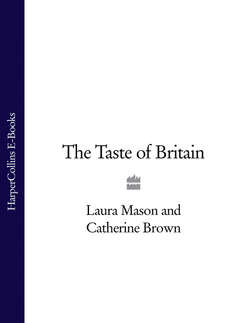Читать книгу The Taste of Britain - Hugh Fearnley-Whittingstall - Страница 107
FLAVOUR: A MILD CURE. HISTORY:
ОглавлениеA reference dated 1794 which mentions the ‘old’ Wiltshire bacon, implies the area had been long known for this product (OED). The trade was based on both pigs native to the region and imported ones from Ireland which were driven across the county on their way to London markets. Mrs Beeton (1861) states the Wiltshire cure used dry salt and coarse sugar, the flitches lying in the pickle for a month before being hung to dry. One of the largest bacon curing companies in Britain, Harris of Calne, was started by a local butcher who took advantage of the herds of pigs passing his doorstep. In the mid-nineteenth century, the company began to use ice to chill the premises in the summer, an innovation allowing production the year round and the amount of salt in the cure to be reduced, making for sweeter, milder bacon. About this time a switch from dry to brine curing took place, to give the modem form of the cure, now practised in many areas outside its place of origin.
The bacon was sold after drying (when it was called green bacon in the South, and pale dried bacon in the north of England). If smoking took place, it was carried out by the wholesaler or retailer to suit their market. The south of the country showed a preference for smoked bacon. Large quantities of bacon are now imported into Britain. Until their Calne factory closed, Harris still produced Wiltshire bacon in its home region, but now there are only 2 commercial curers left in the area.
It should be noted that some bacon experts, for instance William Hogan (1978), use the term Wiltshire to refer to a cut as well as the cure. In this case it indicates half a pig, with the ham left on and the ribs intact but the blade bone removed.
